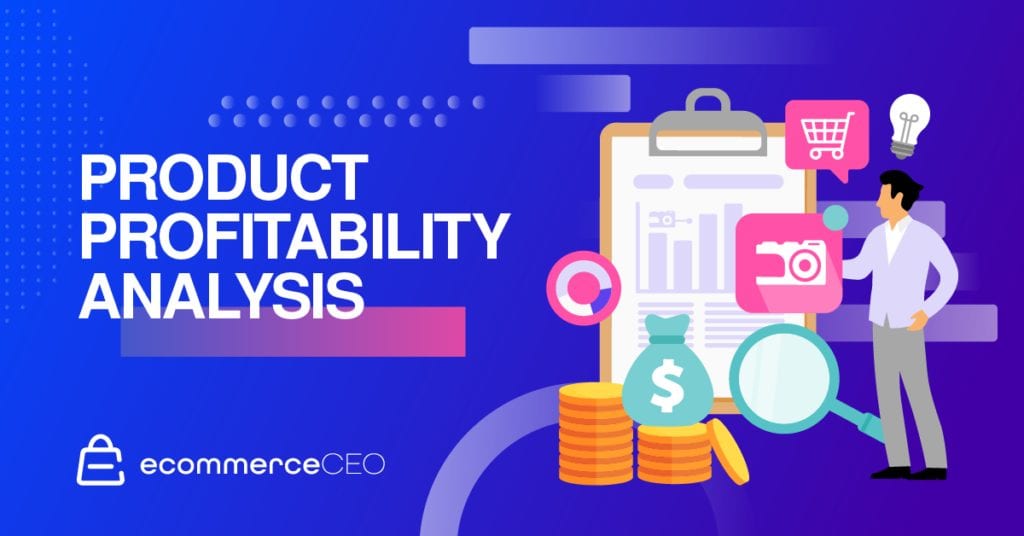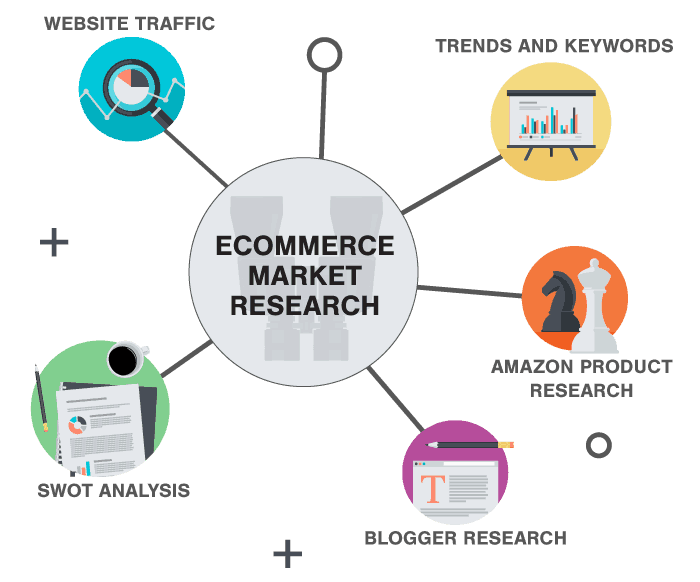Revenue without profit is pointless.
You can generate tons of sales from Facebook Ads or Instagram marketing, but if you’re not making an impact on your bottom like – you got nothing. Gross sales is all smoke and mirrors. Profit is what matters.
Profit is what’s left in your pocket after you break even. For an ecommerce business, a big chunk of expenses is marketing and production.
It doesn’t matter if an establishment depends on brick-and-mortar foot traffic or exists entirely online. Retailers must take in more than the cost of delivering the product, or it ceases to exist.
Profitability analysis isn’t some mystic math formula. It just comes down to knowing a few practical, tried-and-true methods. You just need to be able to identify and segment costs at each step of the way.
Keep reading and I’ll share with your the model and framework I use to quickly measure opportunities for selling physical products online.
Determine The True Cost Of Production
There are a handful of things you must take into account before launching your business. The first involves the cost in getting the product into the hands of the customer.
First, how much does it cost to bring a product into existence?

As an extremely basic example, consider the case of someone who makes yarn-based crafts as a small side business. She might pay $5 for two balls of yarn, from which she creates an item that she sells for $35. The ultimate profit—$30—is impressive for a hobbyist, but not particularly significant in the greater financial scheme of things.
Now apply the same logic to goods whose production is more extensive.
A company that makes T-shirts is paying for more than just the cost of the material. Most likely, it has to employ people with access to equipment, which in turn is kept in a building, which in turn requires electricity to operate, and so on.
One of the biggest mistakes I see entrepreneurs make is to not account for the time they spend working. Eventually, you need to hire someone to take on your role, that will increase your cost.
Bigger profits require bigger outlays in terms of initial investment.
As explained on Entrepreneur, running a business comes with many potential costs, including, but not limited to:
- Property and equipment leases
- Loan repayments
- Utilities
- Salaries/wages/commissions of employees
- The inventory itself
These concerns are not limited to the realm of traditional businesses.
For example, a seller whose inventory is housed in a third-party warehouse must still pay the costs associated with third-party logistics.
Other factors that will need to be written into the profit margin may include:
- Markdowns
- Unexpected shortages
- Damaged inventory
- Shrinkage (e.g. shoplifting)
- Employee discounts
Finally, even after a product has been “produced,” there are freight costs—the shipping of the product from Point A to Point B.
Point A is the place or places at which the product was manufactured or assembled; Point B is your place of business—or, depending on the scenario, the customer.
Again, note that similar principles apply even to “nontraditional” business enterprises: a seller who utilizes the drop-shipping services of a third-party distributor must still contend with the costs of shipping.
What makes the determination of profitability tricky is the ultimate realization that every factor listed above is subject to change.
Overhead and shipping costs can (and will) increase over time. Employees can (and will) ask for raises or attempt to renegotiate salary. But perhaps the biggest source of change will be found in the specific nature of the market you have chosen to enter.
To get a true grasp of your costs, you need to learn the difference between fixed and variable costs.
After your first reporting period, you’ll have a much greater insight to information and numbers driving your performance.
Test The Market
Determining the price that customers are willing to pay for a product is a multifaceted process.
It might begin as simply as drawing upon your own experience as a customer, putting yourself in the shoes of someone who might be interested in the product you intend to sell. Consulting with family, friends and acquaintances who have prior familiarity with the product is also a good course of action.
While not quite on the level of “guesswork,” a certain amount of this will require going with your gut. And as a general rule, the smaller the business, the truer this will be.
But prices cannot be pulled out of thin air.
Effectively gauging the market is work that requires you to examine the prices of products as set by your competition. On the lower end, a seller on the Amazon marketplace might only need to look at marketplace listings for a particular product to get an immediate sense of how it’s priced, from highest to lowest.
Other products will require further digging, or even making a few calls. You may not even know the names of your competitors without first undertaking research.

A potential downside is that a prospective business owner might not encounter encouraging results. Maybe the market is not willing to pay enough to make going into business seem worthwhile, especially after costs of production have been calculated. But don’t be discouraged.
Continue testing the market by conducting research on a wider scale. Imagine entering a market that currently seems lucrative, albeit potentially saturated—something like CBD oils. The potential for accurate research would seem fairly vast.
As stores that sell this product pop up in your city of residence, visit them. Take note of what is being stocked on the shelves and the associated prices. Compare with online prices for the same or similar products in ecommerce contexts via Internet research.
Expect the opening stages of this process to take days, weeks, and even months. Spreadsheets comparing prices for different products help practically minded entrepreneurs wrap their minds around the numbers.
Expect frustration, too.
Prices rise and fall in response to forces that are beyond your control. Whether it’s the presence of marketing competition or broader economic trends, sometimes the best you can do is just to understand them.
In any case, don’t spend too long studying business, gathering data and conducting research, as all of this is merely the prelude to taking action!
Find The ‘Sweet Spot’
Now let’s say you have taken action. Somewhere between a price that is too little to recover costs and a price that is too much for any reasonable customer to pay lies the perfect midpoint. It’s up to you to find it.
The importance of being aware of competitor pricing does not end once you’ve set up shop; in fact, it’s only just begun.
To truly compete is to engage yourself in a monthly, weekly, daily, hourly cycle of awareness.
Are the prices on display at competitors’ establishments changing? If so, why? Which products are meeting sales expectations and which are not?
Business expert Matt Freeman recommends monthly assessments of product profitability. Create categories like “core” and “growth” and assign products accordingly. Those that underperform be placed on a kind of “probation,” followed by an actionable plan to improve their sales.
What might such a plan include?
Here, it becomes clear that finding a “sweet spot” is about much more than sales figures. It is about striking an attitude that will make customers want to choose you over their other options.
As an example, you could offer relevant business insights in the form of blogs or social media posts that analyze trends or aggregate data from other sources. Services like this do not directly generate profits, but they contribute to an image of a business that cares—something that far too many businesses (perhaps including your competitors) fail to do.
The right prices, the right attitude, the right understanding of customer psychology—all inform each other and cohere into a profitable whole.
Understand Margins
Referring back to Entrepreneur, remember that margin is best understood as “the difference between total sales and the cost of those sales.”
It seems simple enough, but remember: All of these numbers can change.
Significantly, this can work to your advantage. Just as reducing personal expenses can be as important as increased earnings in one’s own finances, so too is reducing business expenses key to higher margin.
The old adage “time is money” comes into play here, too, as saving time is often tantamount to reducing costs.
So look for ways to get “more bang for your buck” wherever you can find them. Sellers who inhabit the e-commerce world can gain a lot by simplifying and streamlining their checkout processes.
Sellers with physical facilities can reduce overhead by switching to more energy-efficient lightbulbs. These are just a couple of the seemingly countless examples of more cost-effective operation.
As you gain experience with operating a business, you will also figure out new or improved ways to reduce costs in areas like labor and shipping.
Or you can turn to the services of Sourcify and other similar tools, which connect budding entrepreneurs with the manufacturers that are right for them.
Variable Costs Calculator
The Main Takeaway From All Of This?
Know the costs of doing business.
Obtain accurate pricing for the production, shipping and other costs involved in manufacturing a product. Keep tabs on the competition, and—aside from the inevitable crunching of numbers—gain a feel for the market.
The process is ongoing, which is to say that it begins before a business is created and never really stops so long as the business continues to function.









